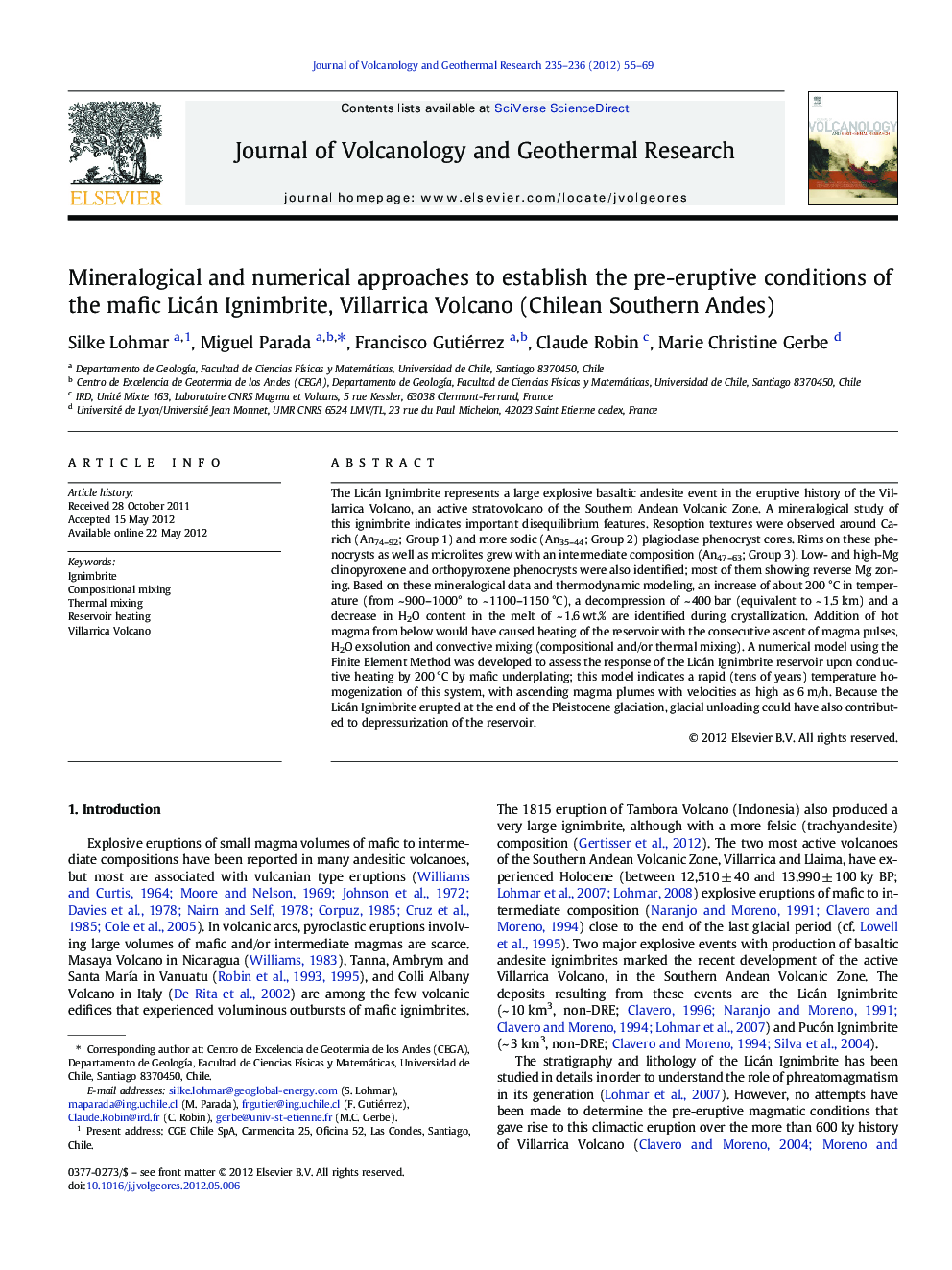| Article ID | Journal | Published Year | Pages | File Type |
|---|---|---|---|---|
| 4713729 | Journal of Volcanology and Geothermal Research | 2012 | 15 Pages |
The Licán Ignimbrite represents a large explosive basaltic andesite event in the eruptive history of the Villarrica Volcano, an active stratovolcano of the Southern Andean Volcanic Zone. A mineralogical study of this ignimbrite indicates important disequilibrium features. Resoption textures were observed around Ca-rich (An74–92; Group 1) and more sodic (An35–44; Group 2) plagioclase phenocryst cores. Rims on these phenocrysts as well as microlites grew with an intermediate composition (An47–63; Group 3). Low- and high-Mg clinopyroxene and orthopyroxene phenocrysts were also identified; most of them showing reverse Mg zoning. Based on these mineralogical data and thermodynamic modeling, an increase of about 200 °C in temperature (from ~ 900–1000° to ~ 1100–1150 °C), a decompression of ~ 400 bar (equivalent to ~ 1.5 km) and a decrease in H2O content in the melt of ~ 1.6 wt.% are identified during crystallization. Addition of hot magma from below would have caused heating of the reservoir with the consecutive ascent of magma pulses, H2O exsolution and convective mixing (compositional and/or thermal mixing). A numerical model using the Finite Element Method was developed to assess the response of the Licán Ignimbrite reservoir upon conductive heating by 200 °C by mafic underplating; this model indicates a rapid (tens of years) temperature homogenization of this system, with ascending magma plumes with velocities as high as 6 m/h. Because the Licán Ignimbrite erupted at the end of the Pleistocene glaciation, glacial unloading could have also contributed to depressurization of the reservoir.
► We established the pre-eruptive conditions of an ignimbrite in Villarrica Volcano. ► Mineralogical data and numerical solution indicate a heating of the magma reservoir. ► Ascent of magma plume to the top of the reservoir and degassing triggered eruption. ► Temperature homogenization of the reservoir was reached rapidly (tens of years). ► Glacier unloading and ignimbrite eruption are eventually related.
